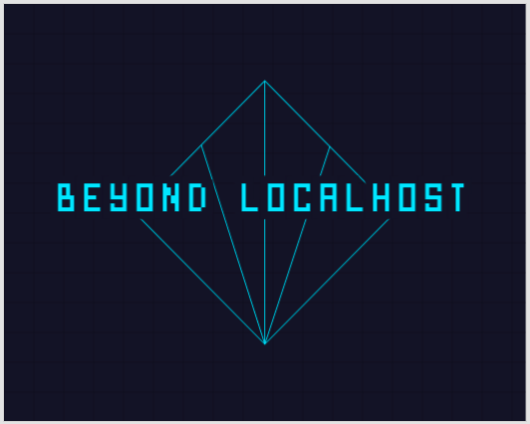From Frustration to Fluidity: Raster's Answer to Clunky DAM Systems
 Marvis Chukwudi
Marvis Chukwudi
Authored by: Marvis Chukwudi and Munir Abdullahi
Digital Asset Management (DAM), on the surface, might appear to be just the solution that organizes a brand's digital assets all in one place, most likely akin to Dropbox or Google Drive. However, surface-level analysis isn't enough when defining technologies that revolutionize our world; instead, depth and a description with substance are what is expected.

DAM is the epicentre of a brand's digital assets. It organizes, controls, and centralizes its digital content. DAM serves as the focal point where all digital assets are stored, managed, and accessed. The following are the responsibilities of a DAM system:
Maintenance and organization of digital assets.
Accessibilities and usability of the brand’s digital resources., such as logos and images.
Collaboration, workforce integration, and storage are facilitated.
Integrity and originality of all resources are preserved.
Amidst all these advantages, some of the challenges accompanying DAM software do not go unnoticed, potentially hindering the adoption of these technologies. Commonly faced challenges include:
Maze-like workflows contribute to user frustration. The numerous dependencies within this system make it look like a puzzle.
Large organizations might struggle to find resources, thereby compromising the system's original purpose.
Legacy technologies, which might be outdated, are used in creating these systems, among other issues.
The Raster DAM System
Raster is a web-based DAM system designed solely for image management and offers a comprehensive solution for hosting an entire stock photo or team image library. It ensures secure storage of original files and operates on a dependable cloud infrastructure. Unlike the common challenges faced by other DAM systems, Raster addresses these challenges by the successful implementation of the following features:
- Simplified Workflow:Raster streamlines workflows by offering an intuitive interface and navigation, reducing the maze-like complexities often seen in traditional DAM systems. By providing a user-friendly design that indicates the next step to execute or the action required on an attractive interface, Raster ensures that users can efficiently manage and access assets without feeling overwhelmed.

- Efficient Resource Retrieval: For large organizations dealing with the struggle of finding resources within their DAM systems, Raster offers robust search functionalities and organized categorization. Users can easily locate and retrieve assets from their image libraries using AI tagging which is autogenerated as soon as the images are uploaded and the “Find using Google” button to perform a reverse Google image search, preventing the compromise of the system's original purpose by ensuring quick access to needed resources.

- Modern Technology Integration:Raster was built with contemporary web technologies, setting it apart from DAM systems that rely on legacy technologies. By utilizing modern infrastructure and leveraging reliable cloud services from Amazon and Google, Raster ensures scalability, reliability, and compatibility with current standards. This approach avoids the pitfalls of outdated technologies commonly found in traditional DAM systems, offering a more future-proof solution.
Features of Raster
Enhanced and seamless organization: This feature utilizes libraries to organize information for organizations or individuals. Libraries can be easily created in minutes through multiple methods, such as tapping “New Library" in the left sidebar and following the prompts.
Convenient and speedy search techniques: Finding files on Raster is now more convenient than ever with the use of AI tags, reverse Google image search, etc.
Robust sharing and collaborative tools for efficient teamwork.
Benefits of Using Raster
The benefits of using Raster can’t be over-emphasized. From the different DAM systems available, Raster offers unique qualities that will help you effectively. Whether you are an individual user or an enterprise, Raster is the suitable DAM system for your work. Let’s take a look at the benefits of using Raster.
Cost-effectiveness: Raster offers flexible pricing models for all levels i.e., individuals and enterprises. It is free for individuals without the intention of using it commercially. However, there exists an affordable rate for teams and enterprises.
Streamlined Collaboration: Editing photos with traditional DAMs and storage applications can be hectic. With Raster, users can team up to edit a photo, track each other’s workflow, and share feedback in real-time.
Enhanced User Experience: Navigating complex interfaces can be overwhelming, especially for new users. Raster tackles this problem by providing an easy-to-navigate interface. Digital assets are easy to find, organize, and share without technical know-how. This approach saves time and improves user productivity.
Improved Asset Management: Raster provides a powerful AI technology that organizes users' digital assets and makes it easy to store them. Users can also effectively arrange their assets by tagging and structuring them how they want them. It improves the entire workflow of the users.
Enhanced Security: Raster employs standard measures that ensure data security. With the traditional DAM approach, the user workflow might be disrupted due to the use of third-party platforms to manage photos, and there could be a data compromise.
Conclusion
We are in the digital era where our information is all over the internet. Sometimes organizing and accessing these digital assets can be tedious, leading to an unfavourable experience.
Raster's user-friendly interface, collaboration tools, and cost-effective plan solve the problems of traditional DAM systems. Organizations and individual users can organize their data by utilizing the available libraries. So why not embrace the modern-era DAM system like Raster and move out of the frustration that comes with using traditional DAM systems?
Subscribe to my newsletter
Read articles from Marvis Chukwudi directly inside your inbox. Subscribe to the newsletter, and don't miss out.
Written by
